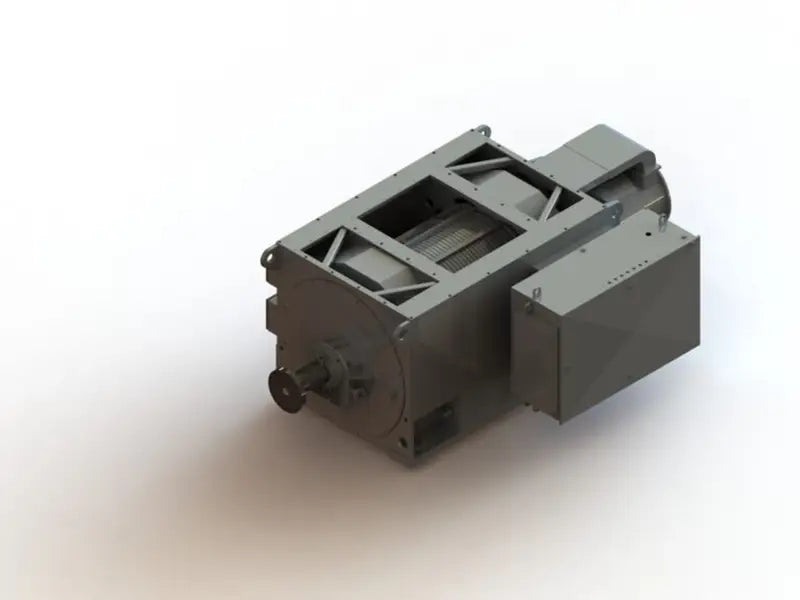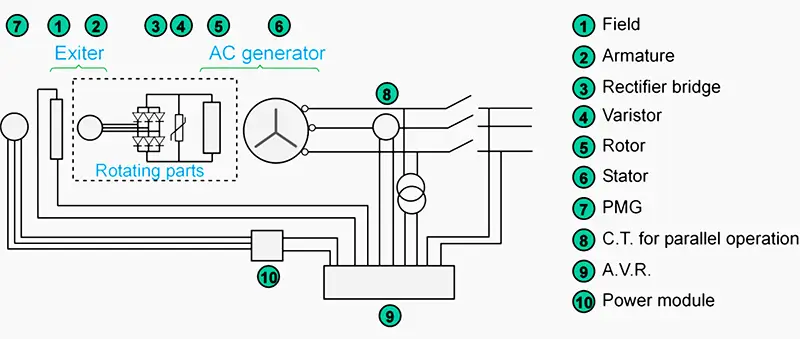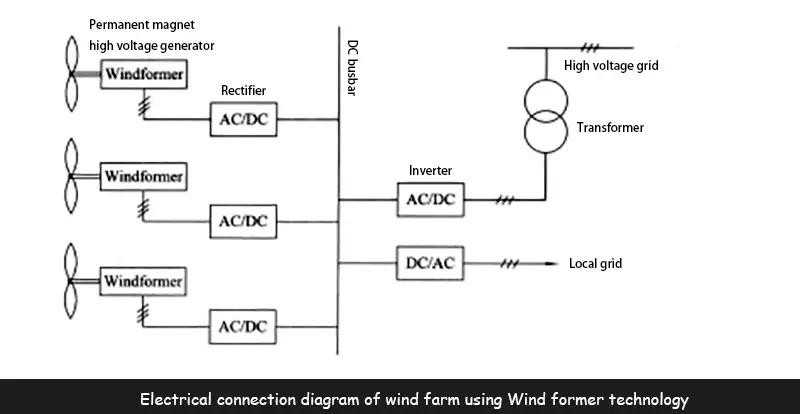
Main content:
1. Structural characteristics of high-voltage synchronous generator
This high-voltage synchronous generator increases the output voltage of the synchronous generator to 10~20 kV, even as high as 40 kV. Because the output voltage of the stator winding of the high-voltage synchronous generator is high, it can be directly connected to the power grid without a step-up transformer, that is, the high-voltage synchronous generator has the functions of a generator and a transformer, and is a comprehensive power generation equipment. The high-voltage synchronous generator was successfully developed by ABB in 1998. This high-voltage synchronous generator has two characteristics in structure: First, the stator winding of the high-voltage synchronous generator is not made of rectangular cross-section copper with insulation in traditional generators. The conductor is made of circular cable wire, and the cable has solid insulation. In addition, because the voltage of the stator winding is high, in order to meet the requirements of the number of winding turns, the stator core slot is deep slot; the second is high-voltage synchronous power generation. The rotor of the machine is made of permanent magnet material and is multi-pole. Because no current excitation is required, there is no slip ring on the rotor.

2. Application of high voltage synchronous generator in wind power generation system
The high-voltage synchronous generator is directly connected to the rotor impeller of the wind turbine, without the need for a speed-up gearbox, and operates at a low speed, which reduces the energy loss when the gearbox is running. There is no excitation loss on the rotor and friction loss on the slip ring, so compared with the wind power generation system with gear speed-increasing transmission and wound rotor asynchronous generator, the loss of the system is reduced, and the efficiency can be improved by about 5 %about. This high-voltage synchronous generator is used in wind power generation systems, also known as Wind forme4r.
Since the high-voltage synchronous generator does not use a speed-increasing gearbox, the noise and mechanical stress during operation are reduced, the maintenance workload is reduced, and the operation reliability is improved. Compared with traditional generators, high-voltage synchronous generator uses cable coils to reduce the possibility of inter-turn and phase-to-phase insulation breakdown, and also improve the reliability of high-voltage synchronous generator systems.

Wind farms using Wind former technology are connected to the power grid conveniently and securely. The input end of each high-voltage synchronous generator in the wind farm can be converted into high-voltage direct current output through the rectifier device, and connected to the DC bus to realize grid connection. The direct current is converted into alternating current through the inverter and sent to the local power grid; if When the power needs to be transmitted over a long distance, it can be connected to the high-voltage transmission line by setting a step-up transformer with a higher transformation ratio, as shown in the figure below.

This high-voltage synchronous generator uses a deep slot stator core, which will lead to a decrease in the bending strength of the stator teeth. A new type of strong slot wedge must be used to compact the stator core teeth. At the same time, the use of cables to manufacture the stator assembly , which increases the mass of the high-voltage synchronous generator by about 20%-40%, but due to the elimination of a transformer and a speed-increasing gearbox, the total mass of the high-voltage synchronous generator wind turbine does not increase.
This high-voltage synchronous generator adopts a hydromagnetic rotor, which requires a large amount of permanent magnet materials, and has high requirements on the performance stability of the permanent magnet materials.
In 1998, ABB showed a high-voltage synchronous generator with a single unit capacity of 3~5 MW and a voltage of 1.2 kV, which was planned to be installed in the Nassuden wind farm in Sweden (the wind farm is an offshore wind farm with an The speed is 8m/s, and the estimated annual power generation can reach 11Gw.h), in order to evaluate the operation of the offshore wind farm.
Read more: Introduction of doubly-fed asynchronous generator
















